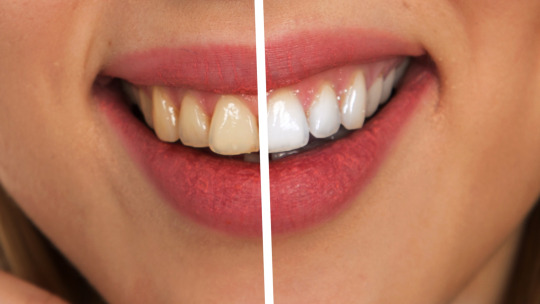#Tooth-Colored Fillings
Explore tagged Tumblr posts
Text
Tooth-Colored Fillings for Children: Aesthetic and Functional Benefits
The benefits of cosmetic dentistry, including dental cavity filling for children, are increasingly recognized as vital for restoring decayed teeth while preserving their natural look and function. Tooth-colored fillings, made from advanced composite resin materials, provide an effective and safe treatment option that repairs cavities in both front and back teeth. This approach not only protects the tooth from further damage but also maintains a child’s confidence by offering a natural-looking restoration free from the appearance of traditional metal fillings.
What Are Tooth-Colored Fillings?
Tooth-colored fillings, also known as composite resin fillings, consist of a durable mixture of plastic and fine glass particles designed to mimic the natural color and texture of teeth. Unlike traditional amalgam fillings, these restorations bond directly to the tooth’s surface, allowing dentists to remove less healthy tooth structure and provide a more conservative, tooth-preserving treatment.
How the Procedure Works
The treatment process begins with the removal of decayed or damaged tooth material. The dentist then carefully cleans and prepares the cavity before applying the composite resin in thin layers. Each layer is hardened instantly with a special curing light to ensure strength and stability. Finally, the filling is shaped and polished to blend seamlessly with the tooth, restoring both function and appearance.
Aesthetic and Functional Benefits
Tooth-colored fillings offer numerous advantages for pediatric patients, including:
Natural Appearance: The composite material matches the child’s tooth color, making the filling virtually invisible.
Conservation of Tooth Structure: Less drilling is needed compared to traditional fillings, preserving more of the natural tooth.
Strong Adhesion: Composite resin bonds securely to the tooth, helping to reinforce weakened areas.
Mercury-Free: These fillings do not contain mercury, alleviating concerns associated with amalgam.
Quick and Comfortable: The procedure is efficient, often completed in one visit with minimal discomfort, allowing children to quickly resume normal activities.
Aftercare and Maintenance
Maintaining good oral hygiene is crucial after receiving tooth-colored fillings. Parents should encourage regular brushing and flossing, and avoid hard or sticky foods that could compromise the restoration. Regular dental checkups are important to monitor the integrity of the fillings and overall oral health, ensuring long-lasting protection.
The benefits of cosmetic dentistry, such as dental cavity filling for children using tooth-colored composites, provide a safe, durable, and aesthetically pleasing solution to pediatric cavities. Families seeking expert care can rely on the best Tooth-Colored Fillings for Children near Sugar Land, TX, where compassionate, high-quality treatment is tailored to meet the unique needs of young patients.
0 notes
Text
Tooth-Colored Fillings for Front Teeth
When it comes to restoring a damaged or decayed front tooth, aesthetics are just as important as function. That’s where tooth-colored fillings come in—designed to blend seamlessly with your natural smile while protecting the tooth structure. These composite fillings are especially popular for front teeth, where visibility makes traditional metal fillings less desirable.
What Are Tooth-Colored Fillings?
Tooth-colored fillings are made from a composite resin material that can be matched to the exact shade of your natural teeth. Unlike silver (amalgam) fillings, these blends are virtually invisible, making them an ideal solution for cavities or minor cosmetic repairs in the front teeth. They not only restore function but also enhance the appearance of your smile.
Benefits of Tooth-Colored Fillings
Natural Appearance: They mimic the color and translucency of real teeth, making them unnoticeable to others.
Strong Bond: Composite material bonds directly to the tooth, which provides additional support and prevents further damage.
Versatility: In addition to treating cavities, they can also be used to repair chipped, cracked, or worn teeth.
Mercury-Free: A safe, modern alternative to metal fillings.
The Procedure
The process begins with your dentist gently numbing the area around the affected tooth. Any decay or damaged material is carefully removed. The dentist will then apply the composite resin in layers, using a special light to harden each layer before shaping and polishing the final result. The entire procedure can typically be completed in a single visit, making it a convenient choice for busy patients.
Long-Lasting Results
With proper oral hygiene and regular dental check-ups, tooth-colored fillings can last many years. They’re durable enough to handle daily wear and tear and resistant to staining.
If you’ve noticed damage or discoloration in your front teeth, it’s worth exploring your options. Schedule a consultation with the best dentist in Houston, TX 77081 to see how tooth-colored fillings can restore your smile with confidence and comfort.
0 notes
Text
Zoom Teeth Whitening
Discover Zoom teeth whitening at Carlyle Dental – a fast, safe, and effective way to brighten your smile. This advanced treatment can whiten teeth up to eight shades in one visit. Learn about the benefits, the process, and why our experienced team ensures long-lasting, beautiful results. Trust Carlyle Dental for professional care and get the radiant smile you deserve with our expert Zoom teeth whitening services.

0 notes
Text
The Ultimate Guide to Local Teeth Whitening Dentists: What to Look For
A bright smile can significantly enhance your confidence and overall appearance. However, achieving that perfect smile often requires the expertise of a teeth whitening dentist near me. With a myriad of options available, knowing how to choose the right dental professional for your whitening needs is essential. At Dream Smile Dental, we are committed to providing exemplary teeth whitening services in Union City, ensuring our patients achieve dazzling results. This guide will walk you through the key factors to consider when searching for a local teeth whitening dentist, the benefits of professional whitening, and the various treatment options available.

Why Choose Professional Teeth Whitening?
Before delving into the specifics of selecting a local dentist, let’s first understand the advantages of opting for professional teeth whitening over over-the-counter products.
1. Customized Treatment Plans
A professional teeth whitening dentist near me create a personalized treatment plan tailored to your unique dental needs. They will assess the condition of your teeth, discuss your desired results, and recommend the best approach to achieve your goals.
2. Superior Results
Professional whitening treatments typically yield faster and more dramatic results compared to at-home products. Dentists use stronger bleaching agents that can lighten your teeth several shades in just one session, making it an efficient choice for those seeking immediate improvement.
3. Safety and Comfort
A qualified dentist will ensure that the whitening process is safe and comfortable. They have the knowledge to protect your gums and oral tissues from potential irritation and sensitivity, which can occur with over-the-counter products.
4. Long-Lasting Effects
With professional whitening, you can enjoy longer-lasting results. While at-home treatments may require ongoing application, the effects of professional procedures can last for months, especially with proper care and maintenance.
What to Look For in a Teeth Whitening Dentist
When searching for a teeth whitening dentist near me, consider the following key factors to ensure you choose the right professional for your needs:
1. Qualifications and Experience
The first step is to verify the dentist’s qualifications and experience in cosmetic dentistry. Look for a dentist who has undergone specialized training in teeth whitening procedures and has a proven track record of successful treatments. A qualified dentist will be knowledgeable about the latest techniques and technologies in the field.
2. Patient Reviews and Testimonials
Reading patient reviews and testimonials can provide valuable insight into the quality of care and service you can expect from a dentist. Look for feedback on their professionalism, results, and overall patient experience. Positive testimonials can indicate a dentist’s ability to deliver satisfying outcomes.
3. Consultation Availability
A reputable teeth whitening dentist will offer a consultation before the procedure. This meeting is an opportunity for you to discuss your goals, ask questions, and assess the dentist’s approach. During the consultation, the dentist should evaluate your dental health and recommend a treatment plan that aligns with your needs.
4. Technology and Techniques Used
Inquire about the technology and techniques the dentist employs for teeth whitening. Advanced equipment and high-quality whitening products can significantly affect the effectiveness and safety of the procedure. At Dream Smile Dental, we utilize state-of-the-art technology to deliver superior results for our patients.
5. Office Environment and Staff
The atmosphere of the dental office and the demeanor of the staff can impact your overall experience. Choose a dentist whose office is welcoming and whose staff is friendly and attentive. A positive environment can help ease any anxiety you may have about the whitening process.
6. Transparent Pricing and Payment Options
Before committing to a teeth whitening procedure, ensure that the dentist provides transparent pricing and offers various payment options. Understanding the costs involved will help you make an informed decision without any financial surprises.
Types of Teeth Whitening Treatments
When you visit a teeth whitening dentist near me, you may encounter various treatment options. Understanding these choices can help you decide which method is best for you.
1. In-Office Whitening
In-office whitening is one of the most popular options for those seeking immediate results. This procedure involves the application of a professional-grade whitening gel to your teeth, which is activated by a specialized light. The entire process typically takes about an hour and can lighten your teeth several shades in just one visit.
2. At-Home Whitening Kits
For patients who prefer the convenience of whitening at home, many dentists offer customized at-home whitening kits. These kits include custom-fit trays and professional-grade whitening gel that you apply at your own pace. This option allows for greater flexibility while still providing effective results.
3. Combination Treatments
Some patients may benefit from a combination of in-office and at-home treatments. This approach can help achieve optimal results while allowing patients to maintain their whitening regimen at home. Your teeth whitening dentist near me can help determine the best combination for your needs.
Maintaining Your Bright Smile
After achieving your desired results, it’s essential to maintain your bright smile. Here are some tips to help you keep your teeth looking their best:
1. Good Oral Hygiene Practices
Maintaining a consistent oral hygiene routine is crucial for preserving your whitening results. Brush your teeth twice a day, floss daily, and visit your dentist for regular check-ups and cleanings.
2. Avoid Staining Foods and Beverages
While it’s not necessary to completely eliminate staining foods and beverages from your diet, moderation is key. Limit your consumption of coffee, tea, red wine, and other staining substances to help maintain your bright smile.
3. Use a Straw for Beverages
When consuming beverages that may stain your teeth, consider using a straw to minimize contact with your teeth. This simple change can help reduce the likelihood of staining.
4. Schedule Touch-Up Appointments
Over time, your teeth may naturally become duller, especially if you consume staining foods and beverages. Schedule periodic touch-up appointments with your teeth whitening dentist near me to maintain your results.
Conclusion: Your Path to a Dazzling Smile
Choosing the right teeth whitening dentist near me is a significant step toward achieving a brighter, more confident smile. With professional whitening treatments, you can enhance your appearance and improve your self-esteem. At Dream Smile Dental, we are dedicated to providing exceptional teeth whitening services that cater to your individual needs.If you’re ready to transform your smile, contact us today to schedule a consultation. Our experienced team is here to guide you through the whitening process, ensuring a safe and effective experience that leaves you with a smile you can be proud of. Embrace your dazzling smile and let it shine brightly for all to see!
0 notes
Text
Our skilled team is dedicated to providing beautiful, natural-looking restorations that blend seamlessly with your smile while preserving your dental health. Looking for high-quality Tooth Colored fillings in Perris? Visit Nuevo Perris for affordable tooth restoration services, Protect and support a tooth after an extensive filling.
0 notes
Text
Why Root Canal Treatment Can Save Your Tooth: Benefits and Facts
Root canal treatment is often surrounded by misconceptions and fear, yet it is one of the most effective ways to save a tooth that has become infected or severely damaged. Understanding the benefits, facts, and the process involved can help alleviate anxiety and encourage individuals to seek the treatment they may need. This article delves into the importance of root canal treatment its advantages, and essential facts that everyone should know.

Understanding Root Canal Treatment
What is a Root Canal?
A root canal is a dental procedure designed to remove infected or damaged pulp from inside a tooth. The pulp consists of nerves, blood vessels, and connective tissue, and it plays a crucial role in the tooth's development. When the pulp becomes infected due to decay, trauma, or cracks, it can lead to pain and further complications if left untreated.
The Process of Root Canal Treatment
The root canal procedure typically involves the following steps:
Diagnosis: The dentist will evaluate your symptoms, perform X-rays, and diagnose the condition of the tooth.
Anesthesia: Local anesthesia is administered to numb the area around the affected tooth.
Access Opening: The dentist creates an opening in the crown of the tooth to access the pulp chamber.
Pulp Removal: Infected or damaged pulp is carefully removed using specialized instruments.
Cleaning and Shaping: The empty pulp chamber is cleaned, shaped, and disinfected to prepare it for filling.
Filling: The chamber is filled with a biocompatible material called gutta-percha to seal it and prevent reinfection.
Restoration: Finally, the tooth is restored with a crown or filling to restore its function and appearance.
Benefits of Root Canal Treatment
1. Pain Relief
One of the primary reasons patients seek root canal treatment is to alleviate pain. When the pulp becomes infected or inflamed, it can cause severe toothache. Root canal treatment removes the source of the pain, providing immediate relief and allowing patients to return to normal activities.
2. Preservation of Natural Teeth
Root canal treatment is one of the best ways to preserve a natural tooth that might otherwise need to be extracted. Losing a tooth can lead to various complications, including:
Shifting Teeth: Adjacent teeth may shift into the gap left by the missing tooth, leading to misalignment.
Bone Loss: The jawbone can deteriorate over time due to the absence of tooth roots, which can affect facial structure.
By opting for a root canal, patients can maintain their natural teeth and avoid these complications.
3. High Success Rate
Root canal treatment has a high success rate, with studies showing that approximately 85-97% of treated teeth can last a lifetime with proper care. This makes it a reliable option for saving a tooth compared to extraction, which often leads to additional dental work.
4. Improved Oral Health
When a tooth is infected, it can affect overall oral health. Bacteria from the infected pulp can spread to other teeth and lead to systemic issues. By removing the infected tissue, root canal treatment helps improve overall oral health and reduces the risk of further complications.
5. Cost-Effectiveness
While the initial cost of a root canal may seem high, it is often more cost-effective than the long-term expenses associated with tooth extraction and replacement. Extraction can lead to additional procedures such as implants, bridges, or dentures, which can be significantly more expensive.
Common Misconceptions about Root Canals
1. Root Canals are Painful
Many people believe that root canal treatment is painful. However, with modern techniques and anesthesia, most patients report that the procedure is no more uncomfortable than getting a filling. The pain associated with the infection is typically more severe than the treatment itself.
2. Root Canals Require Multiple Visits
While some complex cases may require multiple visits, many root canal procedures can be completed in a single appointment. Advances in dental technology, such as rotary endodontics, allow for more efficient treatment.
3. Teeth Treated with Root Canals are Weak
Another common misconception is that teeth that have undergone root canal treatment are weak or brittle. In reality, once a tooth is restored with a crown or filling after a root canal, it can function just as well as a natural tooth.
When is a Root Canal Necessary?
Several signs may indicate the need for a root canal. These include:
Severe Toothache: Persistent pain that may worsen when biting or applying pressure.
Sensitivity: Prolonged sensitivity to hot or cold, even after the source has been removed.
Swelling: Swelling or tenderness in the gums around the affected tooth.
Discoloration: Darkening of the tooth, which may indicate internal damage.
Abscess: The presence of a pimple-like bump on the gums, which can indicate infection.
If you experience any of these symptoms, it is essential to consult a dentist promptly for evaluation.
Aftercare Following a Root Canal
1. Pain Management
It is normal to experience some discomfort after a root canal. Over-the-counter pain relievers can help manage this discomfort. Your dentist may also prescribe medication if necessary.
2. Avoid Certain Foods
For the first few days after treatment, it is advisable to avoid hard, crunchy, or sticky foods that could put pressure on the treated tooth. Stick to soft foods to allow the area to heal.
3. Maintain Good Oral Hygiene
Continued good oral hygiene is crucial for the success of the treatment. Brush and floss regularly, and follow any specific aftercare instructions provided by your dentist.
4. Attend Follow-Up Appointments
Your dentist may schedule a follow-up appointment to ensure the tooth is healing properly and to place the final restoration if needed. Regular check-ups can help monitor your overall dental health.
Conclusion
Root canal treatment is a vital procedure that can save your tooth and alleviate pain. With a high success rate, the ability to preserve natural teeth, and improvements in oral health, it is a treatment worth considering if you face tooth infection or damage. Despite common misconceptions about pain and the complexity of the procedure, advancements in dental technology have made root canals more comfortable and efficient.If you experience symptoms that suggest the need for a root canal, do not hesitate to consult with a dental professional. Early intervention can lead to better outcomes and a healthier smile. Embrace the possibility of saving your tooth with root canal treatment and enjoy the lasting benefits of good oral health.
0 notes
Text
Modern Tooth-Colored Fillings
Enhance your smile with seamless and natural-looking
at Carlyle Dentistry. Our expert team is dedicated to providing personalized, state-of-the-art restorative solutions designed to meet your unique needs. Discover the beauty and functionality of tooth-colored fillings for a smile that looks and feels great. Trust Carlyle Dentistry for top-quality care and a comfortable, patient-centered experience. Elevate your dental care journey with our modern techniques and commitment to excellence. Experience the confidence of a radiant smile with our advanced tooth-colored fillings. Visit Carlyle Dentistry today and transform your oral health with our innovative solutions.

#Tooth-Colored Fillings#dental care greenville nc#emergency dentist greenville nc#kinston dental clinic#invisalign greenville nc#family dentist greenville nc
0 notes
Text
Everything You Need to Know About Tooth-Colored Fillings
In the world of modern dentistry, the quest for seamless, natural-looking restorations has become a top priority for many individuals seeking to enhance the aesthetic appeal of their smiles. One of the most popular and widely adopted solutions in this pursuit is the use of tooth-colored fillings, also known as composite resin or direct composite fillings. These revolutionary dental restorations have transformed the way we approach the treatment of cavities and other minor dental imperfections, allowing patients to achieve a more harmonious and aesthetically pleasing result.

Understanding the Essence of Tooth-Colored Fillings
Tooth-colored fillings are a type of dental restoration material that is designed to closely match the color and appearance of natural teeth. Unlike traditional metal (amalgam) fillings, which can stand out and create a noticeable contrast in the mouth, tooth-colored fillings are meticulously crafted to blend seamlessly with the surrounding tooth structure, creating a virtually invisible restoration.
The primary component of tooth-colored fillings is a composite resin, a material that is made up of a blend of glass or quartz filler particles, a resin base, and other additives. This unique composition not only ensures a natural-looking result but also provides exceptional durability and longevity, making it a popular choice for both front and back teeth.
The Benefits of Choosing Tooth-Colored Fillings
The numerous advantages of tooth-colored fillings have contributed to their growing popularity among dental patients. Exploring these benefits can help you understand why this restorative option may be the ideal choice for your oral health and aesthetic needs.
1. Aesthetic Superiority: Tooth-colored fillings offer unparalleled aesthetic appeal, blending effortlessly with the natural color and translucency of your teeth. This seamless integration creates a uniformity in your smile, effectively concealing any visible signs of dental work and boosting your overall confidence.
2. Versatility: Tooth-colored fillings can be used to address a wide range of dental issues, from cavities and minor chips to discoloration and other cosmetic concerns. This versatility allows your dentist to tailor the treatment to your specific needs, ensuring a customized and effective solution.
3. Long-Lasting Durability: Modern tooth-colored fillings are designed to withstand the rigors of daily use, offering exceptional durability and longevity. With proper oral hygiene and regular dental check-ups, these fillings can often last for many years, providing a reliable and long-lasting restoration.
4. Improved Oral Health: Unlike traditional metal fillings, tooth-colored composites do not contain any mercury or other potentially harmful substances. This makes them a safer and more biocompatible option, promoting better overall oral health and reducing the risk of potential complications.
5. Minimally Invasive Procedure: The placement of tooth-colored fillings typically requires less removal of healthy tooth structure compared to traditional fillings. This minimally invasive approach helps to preserve the integrity of your natural teeth, reducing the risk of further dental issues in the future.
The Process of Receiving Tooth-Colored Fillings
Undergoing the placement of tooth-colored fillings is a straightforward and relatively quick process that can be completed in just a single dental visit. Here's a general overview of what you can expect:
1. Preparation: Your dentist will first numb the affected area and then carefully remove any decayed or damaged tooth structure, ensuring a clean and healthy foundation for the filling.
2. Shade Selection: Your dentist will carefully select the appropriate shade of composite resin that most closely matches the color of your natural teeth, ensuring a seamless and aesthetically pleasing result.
3. Application: The composite resin material is then carefully applied and sculpted into the prepared tooth cavity, layer by layer, to create a natural-looking restoration.
4. Curing and Polishing: Once the filling is in place, a special curing light is used to harden the composite resin, and the surface is then meticulously polished to achieve a smooth, natural-looking finish.
5. Final Adjustments: Your dentist will make any necessary adjustments to ensure a comfortable and properly aligned bite, allowing you to enjoy your restored tooth with ease.
Maintaining and Caring for Your Tooth-Colored Fillings
Proper maintenance and care are crucial for the long-term success and longevity of your tooth-colored fillings. By following these simple guidelines, you can ensure that your restorations remain in optimal condition for years to come:
1. Meticulous Oral Hygiene: Regular brushing, flossing, and the use of antibacterial mouthwashes are essential for maintaining the health and integrity of your tooth-colored fillings.
2. Dietary Awareness: Avoid foods and beverages that are known to stain or discolor composite resins, such as coffee, tea, red wine, and highly pigmented foods.
3. Regular Dental Check-ups: Visiting your dentist for routine check-ups and cleanings will allow them to monitor the condition of your fillings and address any issues before they become more serious.
4. Protective Measures: If you engage in activities that may put your fillings at risk, such as sports or grinding your teeth, discuss the use of protective devices, such as mouthguards, with your dentist.
Conclusion
Tooth-colored fillings have revolutionized the way we approach dental restorations, offering a remarkable blend of aesthetics, durability, and oral health benefits. By understanding the advantages of this innovative dental solution and the steps involved in the treatment process, you can make an informed decision that will pave the way for a more confident and radiant smile.
As you embark on your journey to restoring the natural beauty of your teeth, remember that the expertise and guidance of a skilled and experienced dentist will be crucial in ensuring the long-term success of your tooth-colored fillings. With the right care and maintenance, these restorations can become an integral part of your lifelong commitment to oral health and aesthetic excellence.
0 notes
Text
#dentist 77079#dentist in memorial#emergency dentistry#cosmetic dentistry#preventive dentistry#crowns & bridges#tmj & bruxism relief#snoring & sleep apnea relief#clear aligners#teeth whitening#porcelain veneers#tooth-colored fillings
0 notes
Text
Exceptional Pediatric Dental Care: Nurturing Smiles from Infancy to Adolescence
Pediatric Dentistry at Paragon Dental provides specialized dental care for children, ensuring their oral health from infancy through adolescence. Our gentle and friendly team uses age-appropriate techniques to make dental visits enjoyable. From preventive check-ups to treatments, we prioritize creating a positive and comfortable experience for your child's dental care.
#Pediatric Dentistry Modesto#Dental Care for Children at modesto#Dental Care for Children#Oral Health#Dental Visits#Preventive Check-Ups#Child Dentistry#kids Dentist#Kids dental problems#Pediatric Dentist#Affordable Cosmetic Dentistry#Affordable Cosmetic Dentist#Porcelain veneers#Dental implants#teeth bleaching and whitening#Laser dentistry#Tooth-colored fillings
0 notes
Text
Tooth-Colored Fillings in Troy | Safe, Metal-Free Options
Looking for tooth-colored fillings in Troy? We offer safe, aesthetic dental restorations that match your natural teeth. Book a visit today.

#tooth-colored fillings troy#teeth fillings troy#tooth-colored composite resin fillings#tooth colored fillings troy#dental fillings troy#tooth colored composite fillings in troy
0 notes
Text
Reclaim Your Smile with Dental Implants in Mount Roskill, Auckland
If you're missing one or more teeth, there's no need to compromise your confidence or quality of life. At Stoddard Dental Square, we offer high-quality dental implants in Mount Roskill, Auckland, designed to restore your smile with strength, function, and natural beauty. For more information please visit: https://www.slideserve.com/StoddardDentalSquare/reclaim-your-smile-with-dental-implants-in-mount-roskill-auckland
#tooth color fillings in mount roskill#root canal treatment in mount roskill#replace discolored fillings#immediate dentures in mount roskill
0 notes
Text
Tooth-Colored Fillings
Carlyle Dental Offers Premium Tooth-Colored Fillings: Enhance Your Smile Naturally - Discover the benefits of tooth-colored fillings at Carlyle Dental. Our skilled team provides high-quality dental care in a comfortable environment. Say goodbye to metal fillings and opt for a more natural look with our tooth-colored fillings. Achieve optimal oral health and aesthetics with Carlyle Dental's advanced solutions. Schedule a consultation today and experience the difference of our personalized approach to dental care.

#Tooth-Colored Fillings#dentist in greenville nc#dentists greenville#dentist in kinston nc#dentist with sedation near me#family dentist greenville nc#pediatric sedation dentistry#dentist greenville nc#advanced sedation dentistry#greenville family dental
0 notes
Text

Get the Best Tooth Colored Fillings in Kendall Park NJ
Looking to restore your smile naturally? Our Tooth colored fillings Kendall Park NJ service blends seamlessly with your natural teeth. Experience high-quality care with a personal touch.
1 note
·
View note
Text
Tooth-Colored fillings are part of a dental procedure in which the decayed and damaged part is removed and the functionality of teeth along with creating an aesthetically pleasing smile that leaves the patient happy. At, Nuevo Perris Dental have a team of experienced doctors who treat your decayed and damaged teeth with painless procedures. we restore the teeth with composite fillings with proper form and function so that teeth will gain their originality and shine bright.
0 notes
Text
Benefits of Tooth-Colored Fillings: Aesthetic and Functional Advantages
Introduction
Dental fillings have long been a common solution for repairing cavities and restoring the integrity of damaged teeth. However, the traditional metal or amalgam fillings have often been criticized for their unsightly appearance and potential health concerns. In recent years, tooth-colored fillings, also known as composite resin fillings, have emerged as a popular alternative, offering both aesthetic and functional advantages.

Aesthetic Appeal
One of the primary benefits of tooth-colored fillings is their ability to blend seamlessly with the natural color of your teeth. Unlike metal fillings, which can stand out and create a noticeable contrast, composite resin fillings are designed to match the exact shade and translucency of your tooth enamel. This results in a natural-looking and discreet restoration that enhances the overall appearance of your smile.
The ability to customize the color of tooth-colored fillings is particularly beneficial for front teeth, as it allows for a more harmonious and aesthetically pleasing outcome. Patients who have previously had metal fillings in their visible teeth can opt for tooth-colored replacements, effectively improving the appearance of their smile and boosting their confidence.
Preservation of Tooth Structure
In addition to their aesthetic advantages, tooth-colored fillings are also known for their ability to preserve more of the natural tooth structure. During the placement of traditional metal fillings, a significant portion of the tooth may need to be removed to create a proper fit. This can weaken the tooth and increase the risk of future complications, such as cracks or fractures.
In contrast, tooth-colored fillings require a more conservative approach. The dentist only needs to remove the decayed or damaged portion of the tooth, leaving a larger amount of healthy tooth structure intact. This not only helps to maintain the tooth's strength but also reduces the risk of further damage or the need for more extensive dental work in the future.
Increased Durability
While aesthetics and tooth preservation are important considerations, the long-term durability of dental fillings is also a crucial factor. Tooth-colored fillings have demonstrated their ability to withstand the daily stresses and forces encountered in the mouth, making them a reliable and long-lasting solution.
Composite resin materials used in tooth-colored fillings are designed to be highly resistant to wear and tear, as well as to the effects of chewing and grinding. They can effectively maintain their shape and integrity over time, ensuring a lasting restoration that can protect the tooth from further decay or damage.
Moreover, the bonding process used to apply tooth-colored fillings helps to create a strong and secure seal between the filling and the natural tooth structure. This bonding helps to prevent the infiltration of bacteria and the formation of new cavities, further enhancing the longevity of the restoration.
Improved Comfort and Sensitivity Reduction
Traditional metal fillings can sometimes cause discomfort or sensitivity, particularly when exposed to hot or cold temperatures. This is due to the differences in thermal conductivity between the metal and the natural tooth structure.
Tooth-colored fillings, on the other hand, are much better at insulating the tooth from temperature extremes. The composite resin material used in these fillings has a similar thermal expansion rate to that of the surrounding tooth structure, minimizing the risk of sensitivity and ensuring a more comfortable experience for the patient.
Additionally, the bonding process used for tooth-colored fillings can help to seal and protect the underlying tooth structure, further reducing the risk of sensitivity and discomfort.
Environmental and Health Considerations
Another significant advantage of tooth-colored fillings is their environmental and health-friendly nature. Traditional metal or amalgam fillings often contain mercury, a substance that has been the subject of ongoing health concerns and environmental debates.
In contrast, tooth-colored fillings are made from a composite resin material that does not contain any mercury or other potentially harmful substances. This makes them a more eco-friendly and safer option for patients who are concerned about the potential health and environmental impacts of traditional dental materials.
Furthermore, the placement of tooth-colored fillings is a less invasive procedure that often requires less drilling and removal of healthy tooth structure. This can contribute to a quicker recovery and a more comfortable experience for the patient.
Versatility and Adaptability
Tooth-colored fillings are not limited to just repairing cavities; they can also be used for a variety of other dental restorative procedures. These fillings can be used to repair chipped, cracked, or worn teeth, as well as to close small gaps or spaces between teeth.
The versatility of tooth-colored fillings also extends to their ability to adapt to changes in the mouth over time. As the patient's teeth naturally shift or change shape, the fillings can be easily modified or replaced to maintain a seamless and natural-looking appearance.
Conclusion
In conclusion, tooth-colored fillings offer a range of benefits that make them a superior choice for many dental patients. From their aesthetic appeal and ability to preserve natural tooth structure to their durability, comfort, and environmental-friendliness, these restorations provide a comprehensive solution for addressing a variety of dental issues.
As advancements in dental materials and techniques continue to evolve, the advantages of tooth-colored fillings will likely become even more pronounced, solidifying their position as the preferred choice for many individuals seeking to maintain the health and appearance of their teeth. By choosing tooth-colored fillings, patients can enjoy the confidence and peace of mind that come with a natural-looking and long-lasting dental restoration.
0 notes